
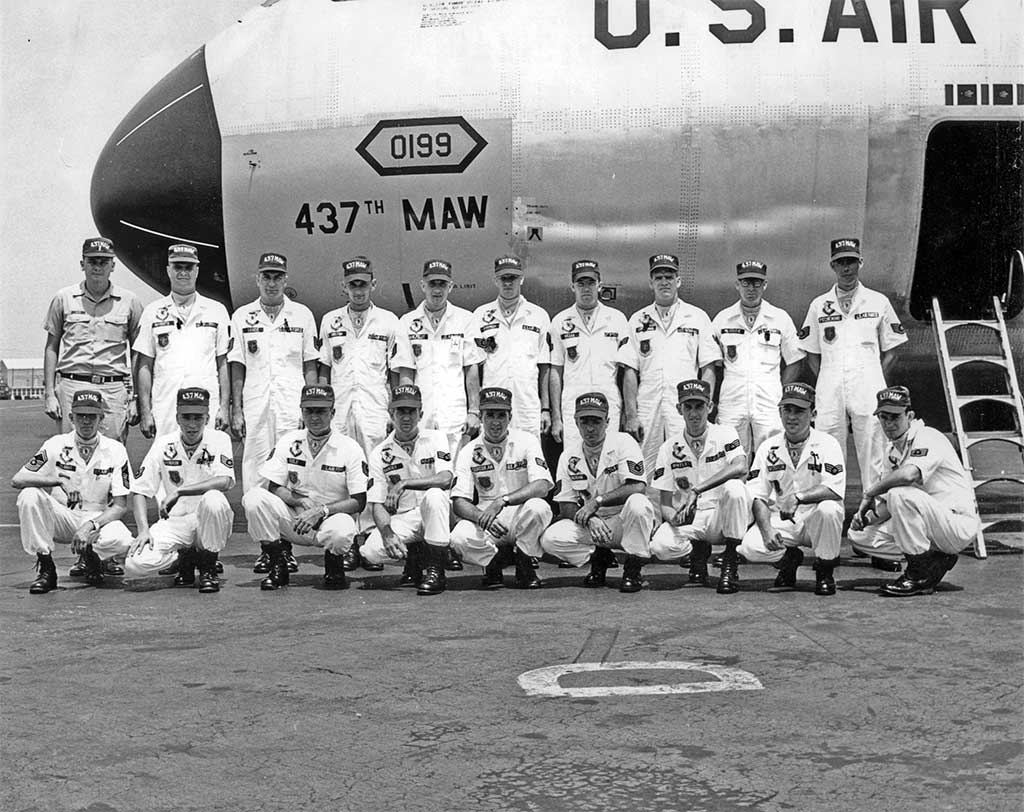
Copyright © - USAF
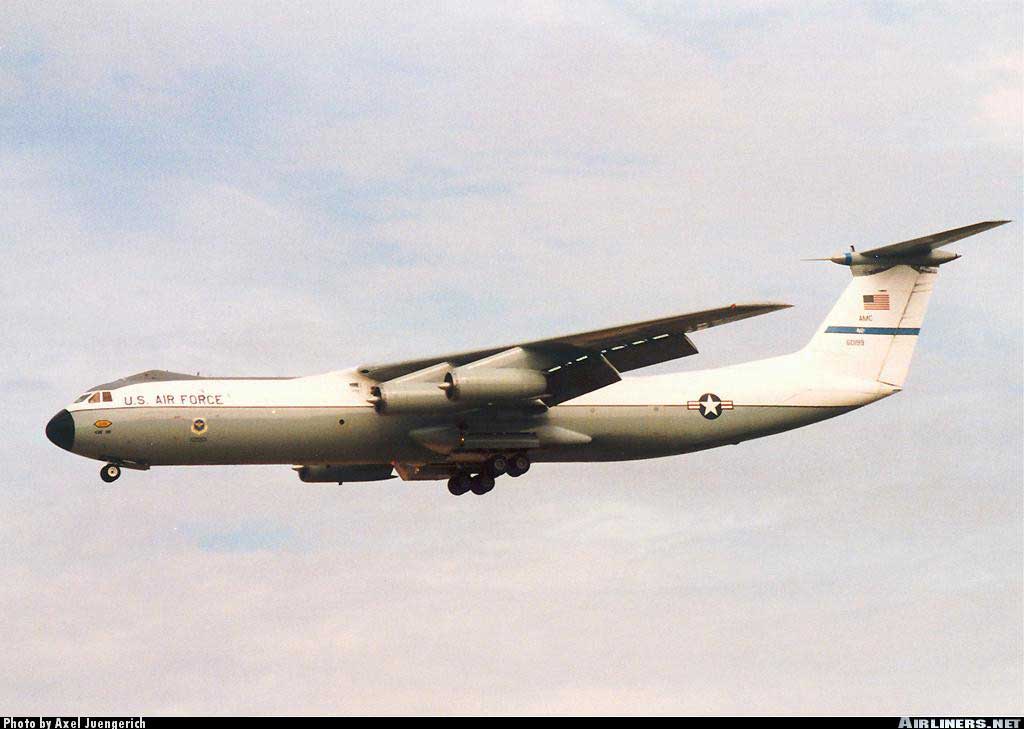
Copyright © - Alex Jeunaerich

Copyright © - Frank J Mirande
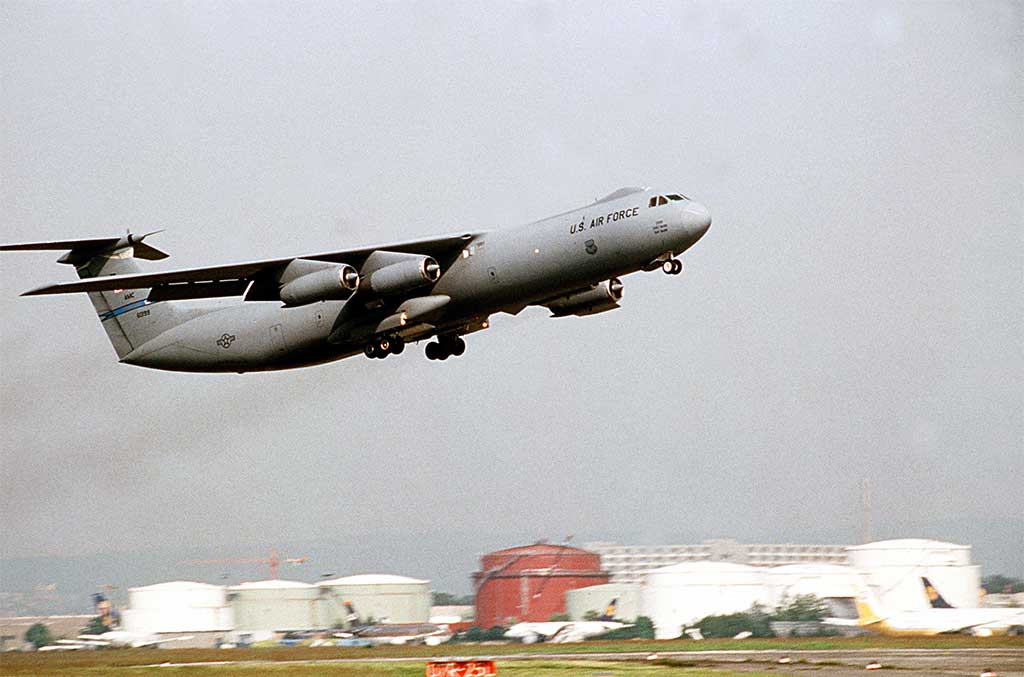
Copyright © - USAF
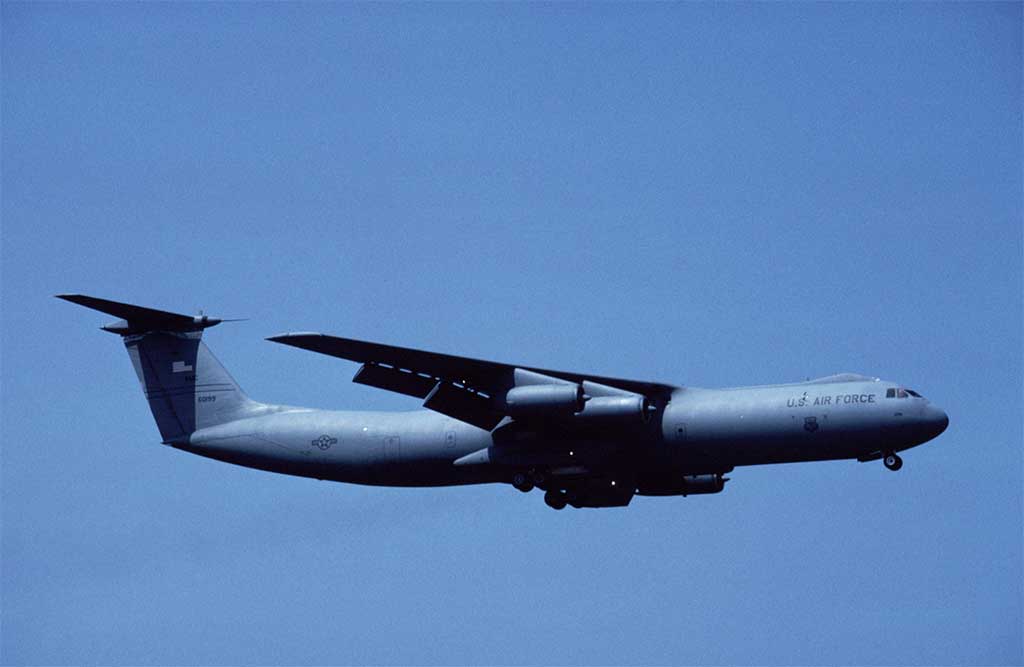
Copyright © - Werner Fishdick
66-0199 was one of the aircraft used for at least one of Bob Hope Christmas
(Berlin, 1990) tours.
You can read the entire story from Air & Space this link
.
An excerpt, related to just the C-141 parts of the story is included below:
--Extracted from the Air and Space story noted above.....----
Diego Garcia, 1972
Ronald Ronning was a 19-year-old Seabee electrician third class on the Navy
communication station at Diego Garcia in 1972 and 1973. After returning to the
States, Ronning went into the Army as a combat engineer, eventually training
National Guardsmen. He is now mayor of Appleton, Minnesota.
They had draft numbers in those days, and my father called me one day and said,
"You've got number 7." I said, "Are you sure it isn't 277?" So I said, I'm
going to join the Seabees because I'm an electrician. I went to the recruiter,
and he said, "You don't want to go into the Seabees, you'll end up on this
little island in the Indian Ocean, that little island right there," and he
points to it on a map. I said, "No, of all the places in the world, I'll never
go there." So where's my first tour? Diego Garcia.
I think it was 115 degrees every day, and humid. I was an electrician there,
lighting the runway. We had an airstrip, but it was 4,000 feet long and was for
C-130 cargo transports.
We wanted Bob Hope to come to Diego Garcia. And we needed 2,000 extra feet on
the runway-a total of 6,000 feet was needed for a C-141 jet. We worked 24 hours
a day for two or three weeks. A thousand Seabees were on that island and they
hadn't seen a girl for six months. So that was our incentive.
Bob
Hope's jet was the first to land on Diego Garcia.
We had regular runway lights, portable, which had rubber cables running all
along the side of the runway. We'd plug them in, and the runway strip would be
red at one end and blue on the other. There were nights when we couldn't get
the lights on. You'd throw the switch and nothing would come on.
It was like a sea of red crabs on the runway all the time, like a swarm. They
would pull apart the lights on the runway and the planes couldn't see to land,
and we weren't within 1,000 miles of anything-you couldn't land anywhere else.
The planes would be ready to run out of fuel in the air.
Many nights they would tell us the lights were out. I don't know if you've ever
watched the movie Hatari! with John Wayne, where he [hunts rhinos] from a
little chair mounted on the hood of a truck. We had a chair on our truck, and I
would sit in it, and we used to tear down that runway at 50 miles an hour,
trying to find the break in the cable lines so the planes could land.
The Bob Hope show was probably the highlight of my tour. I got to sit in the
front-row seat because the runway crews worked all night keeping the crabs off
the runway.
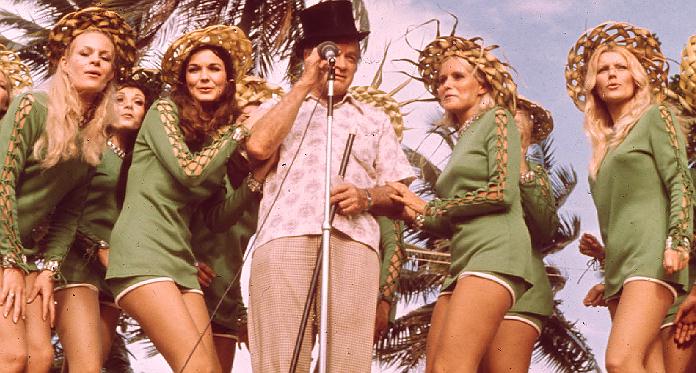
Photo Copyright © - Carl Villanueva
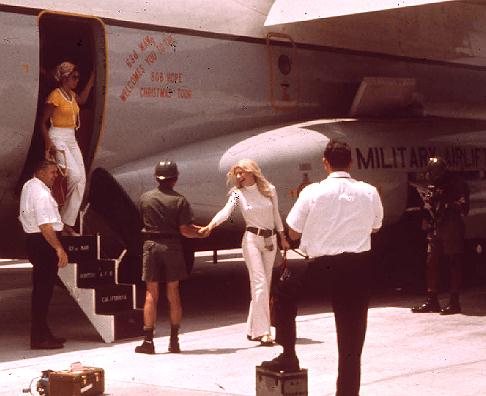
Photo Copyright © - Carl Villanueva
Click here for more pics of Bob Hope in Diego Garcia. (More of Carl's
photos on Ted Morris's DG web site)
and
here for Carl's own Diego Garcia pages.
Spain, 1987
The 57th Military Airlift Squadron at Altus Air Force Base in Oklahoma
transported Hope and his troupe in 1987, and Major Philip "Hawkeye" Pierce was
the third pilot on the crew. Today, Lieutenant Colonel Pierce is director of
operations of the 89th Airlift Squadron, 445th Airlift Wing, at
Wright-Patterson Air Force Base in Dayton, Ohio.
We generally supported all the USO tours with [Military Airlift Command]
airplanes, so it was appropriate for us to step up and fly Mr. Hope around the
world for that particular mission.
We had two [C-141] aircraft. Both airplanes functioned perfectly.
The big hiccup was trying to get into the Azores, into Lages. We couldn't land
there. There were 50-knot winds, but they weren't just 50-knot winds, they were
actually crosswinds. At the time, we could only go up to a 25-knot crosswind
[in the C-141]. So we were really getting buffeted. We were able to loiter
overhead long enough for Mr. Hope to talk to the folks down there via the
radio.
Due to the incredibly bad weather, we had to divert to Rota Naval Air Station
in Spain, where we put on an impromptu show. We showed up unexpectedly, but
boy, did they ever pack the theater at midnight. When the word spread that Bob
Hope was showing up, people came out of the woodwork. And that was the last
show.
Berlin, 1990
Bob McDaniel, a 39-year-old lieutenant colonel and a C-141 flight examiner
pilot at Charleston Air Force Base in South Carolina, learned in 1990 that
Charleston would crew a USO tour to Germany. McDaniel is now the director of
St. Louis Downtown Airport.
I was in the right place at the right time. When the USO tour came up, it fell
to Charleston to man the mission, and since this was a special USO tour that
would be going to Berlin, they had to have a crew that had the Berlin corridor
qualification and a Russian visa. It turned out there were only two of us that
had those qualifications. So that's how I got on the crew.
We had a double crew, with four pilots, four flight engineers, two loadmasters,
and two navigators on board, and we switched off on the various legs.

Photo Source:Bob McDaniel
Note the Bob Hope caricature forward of the crew door.
Bob McDaniel is 5th from the left, next to the pretty girl!
We were told that this would be [Bob Hope's] last USO tour. We celebrated his
87th birthday on board the aircraft on the flight. Of course [Operation] Desert
Shield rolled around and Mr. Hope made one additional trip in December 1990,
but it was very low key. It wasn't the multi-location tour that he had done in
the past.
At the Berlin Wall, the East German guards were still standing at some of the
old guard posts, and Mr. Hope started a conversation back and forth through a
couple of holes in the wall. They exchanged hats, and took photos of Mr. Hope
wearing an East Berlin guard's hat. It was very impromptu, and you could tell
Mr. Hope was really enjoying it. I remember it was probably in the low 80s that
day, the sun was shining brightly, and it was warm enough that just walking
around you'd work up a sweat. Mr. Hope had his jacket on, collar turned up-you
could tell he was on the chilly side, just like any other old geezer.
Mrs. Hope looked out for him quite a bit; she could tell when he was tiring,
and she would take him away and get him the rest he needed. But when it was
showtime, he was always 100 percent.
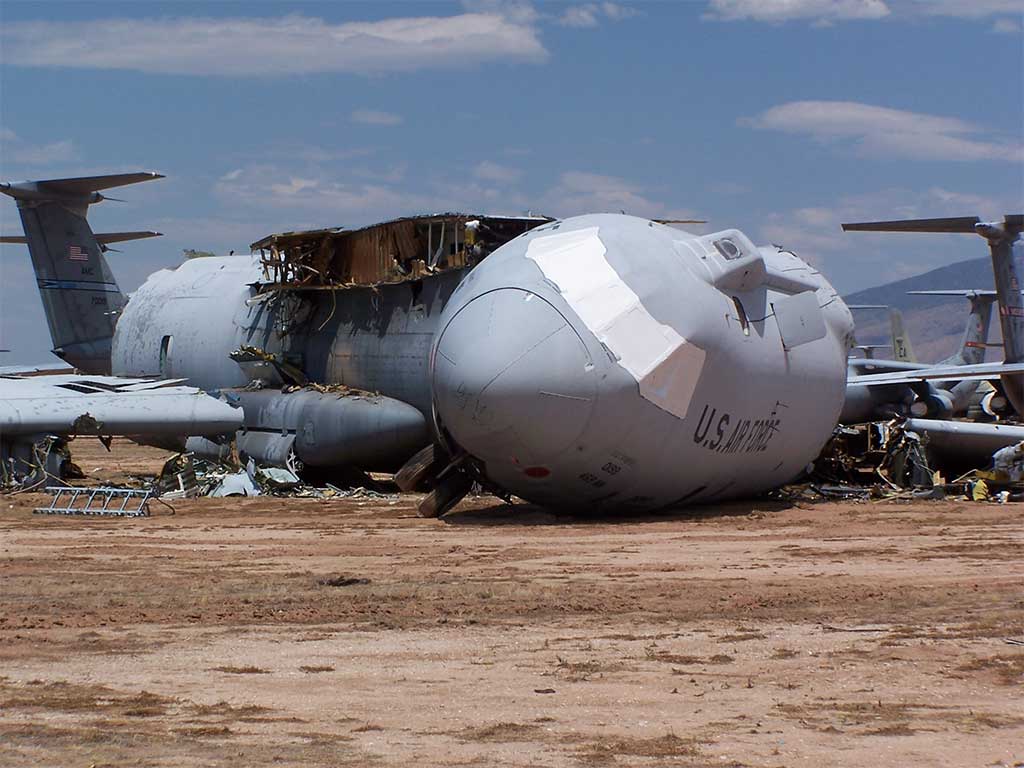
Copyright © - Phil Kovaric